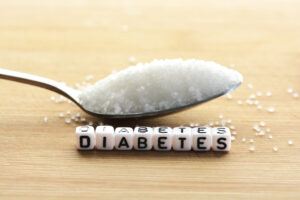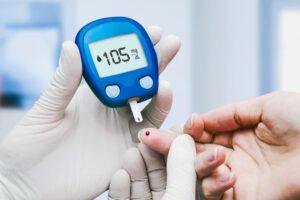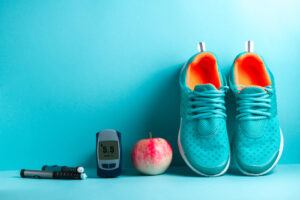425 million people are living with diabetes globally, or around 1 out of every 11 adults. Estimates are that 90 to 95 percent of those diagnosed for diabetes have type 2 diabetes.
Learn About Diabetes
Diabetes or Diabetes Mellitus belongs to a group of metabolic diseases where the body does not produce a sufficient amount of insulin. Insulin plays a significant role in producing and delivering glucose into the cells where it is used in the form of energy.

Untreated diabetes leads to vital organ failure and other health complications due to the high sugar level in the blood.
Understanding Type 2 diabetes
In type 2 diabetes, the body does not use natural insulin which results in an abnormal regulation of blood sugar levels.
Most people with type 2 diabetes face the problem where their body produces less insulin than it needs to function properly; therefore they become unable to control blood glucose levels.
Symptoms of Type 2 Diabetes
Type 2 Diabetes symptoms are so subtle that most people may not realize that they have diabetes. See the primary symptoms of diabetes below:
- Always feeling thirsty
- Frequently getting sick
- Going to the toilet (urinating) often
- Deteriorating or blurred vision
- Feeling hungry, even though you eat regularly
- Infections take longer to heal
- Lacking of energy or feeling tired all the time
- Frequent skin infections, particularly fungal or yeast infections
5 Steps To Prevent Type 2 Diabetes
Follow these five easy steps to prevent type 2 diabetes and reduce medication cost to a great extent:
1. Regular Blood Glucose Screening
Conducting blood tests is the best way to timely diagnose type 2 diabetes. Regular health screenings are a must for overweight and older people to prevent health from getting worse proactively.
The following tests can diagnose prediabetes and type 2 diabetes:
● Fasting Blood Sugar Test
This test is done to measure the blood sugar level on an empty stomach. 100 to 125 (mg/dL) blood sugar level suggests prediabetes while blood sugar level of 126 mg/dL and above indicates diabetes.

● Oral Glucose Tolerance Test
This test is done by taking a blood sample after an 8 hour fast. Then, after drinking a sugar solution, the doctor measures another blood test in the following 1 or 2 hours. This test is beneficial for diagnosing diabetes during pregnancy.
2. Do Regular Exercise
Regular exercise and other physical activities reduce the risk of diabetes. Experts recommend that everyone should engage in moderate exercise or yoga for at least 30 minutes daily for better health.
Moderate exercises include jogging, brisk walking, swimming, cycling, hiking, etc. People with health problems should consult fitness professionals about their best options.
By losing just 7 percent of the body weight, people can lower the risk of diabetes by more than 50%.
3. Follow A Healthy Diet
Balanced and healthy eating begins with nutritious foods which include an adequate amount of carbohydrates, protein, and fat, as well as essential minerals and vitamins. It is better to avoid sweets, carbonated drinks, processed and fried food.

For a healthy diet, replace simple carbohydrates, such as white bread, sugar, and flavored soda drinks, with complex carbohydrates which include oats, legumes, whole grains, and fruits & vegetables.
4. Include Fiber In Your Meal
Including high-fiber foods in your daily meal will help to reduce the chances of type 2 diabetes. It helps people feel more satisfied after meals. There are two types of fiber, soluble (which dissolves in water) or insoluble (which doesn’t dissolve).
Soluble Fiber
Soluble fiber gets easily dissolved in water and forms a gel-like material. It is found in barley, carrots, citrus fruits, apples, beans, peas, oats, and psyllium. It helps in maintaining sugar levels and lower blood cholesterol.
Insoluble Fiber
Insoluble fiber helps you maintain a healthy digestive system and normalize bowel movements. Whole-wheat flour, potatoes, green beans, nuts, cauliflower, wheat bran, are good sources of insoluble fiber.
5. Reduce Stress
High-stress levels are considered an important factor on your blood sugar in many ways. Many people under stress neglect healthy eating habits which trigger an increase in blood sugar.
Stress is one of the main reasons for the body to stop producing insulin. Regular relaxation techniques like deep breathing exercises, tai chi, meditation, and yoga, can help you relax.
Type 2 Diabetes Medication
Some people can achieve normal blood sugar levels with the steps mentioned above, but many also need insulin therapy or diabetes medications.
Medications which are the best for your condition depends on many factors such as your blood sugar level, age factor, blood pressure, etc. The type 2 diabetes medications list includes:
- Dopamine agonists
- Metformin (Glucophage, Glumetza, others)
- GLP-1 receptor agonists
- Sodium-glucose transporter SGLT2 inhibitors
- Biguanides
- Sulfonylureas
- Meglitinides
- Alpha-glucosidase inhibitors
- DPP-4 inhibitors
- Thiazolidinediones
A mobile app like the MedManage medication management app can be used to help keep track of the medications prescribed for diabetes.
Conclusion
You can reduce the risk of type 2 diabetes by making these healthy lifestyle changes that promote normal blood sugar and insulin levels.

